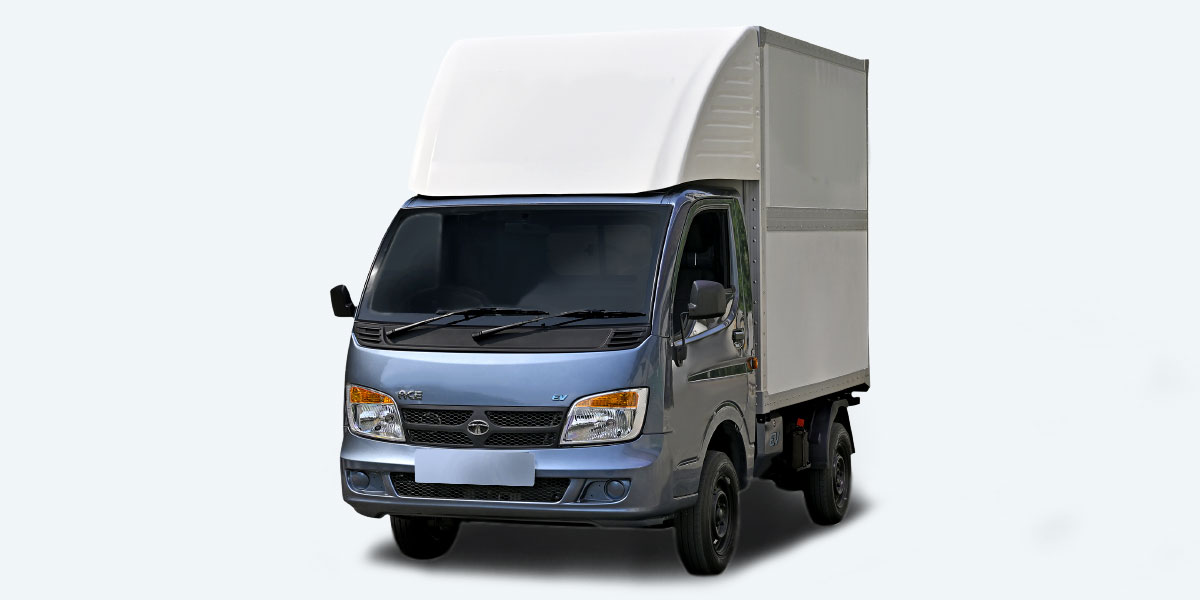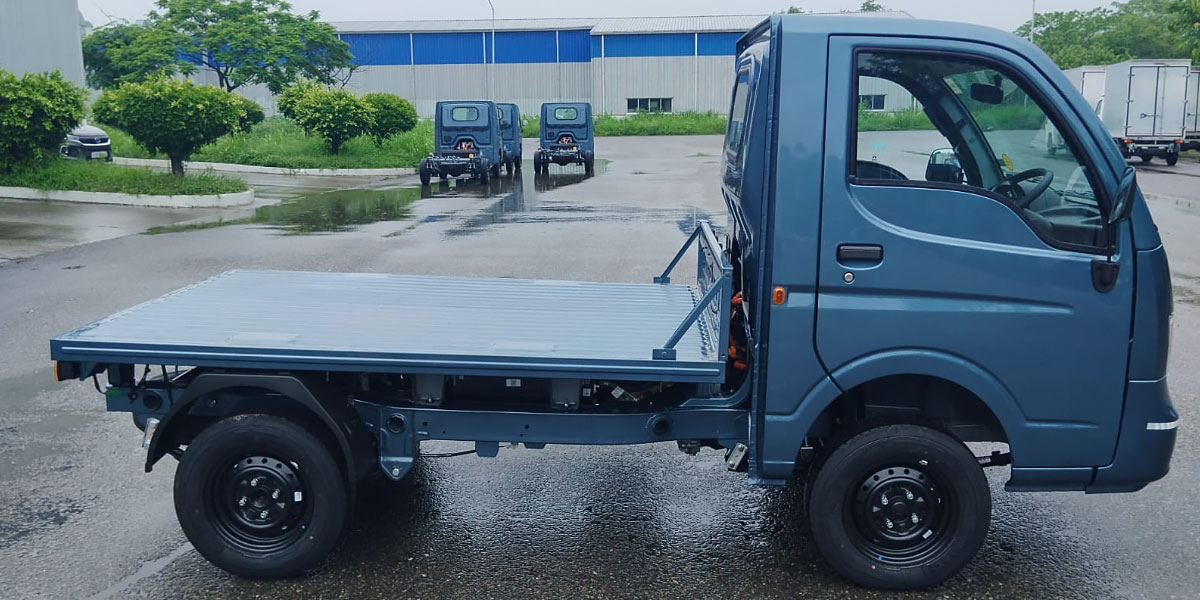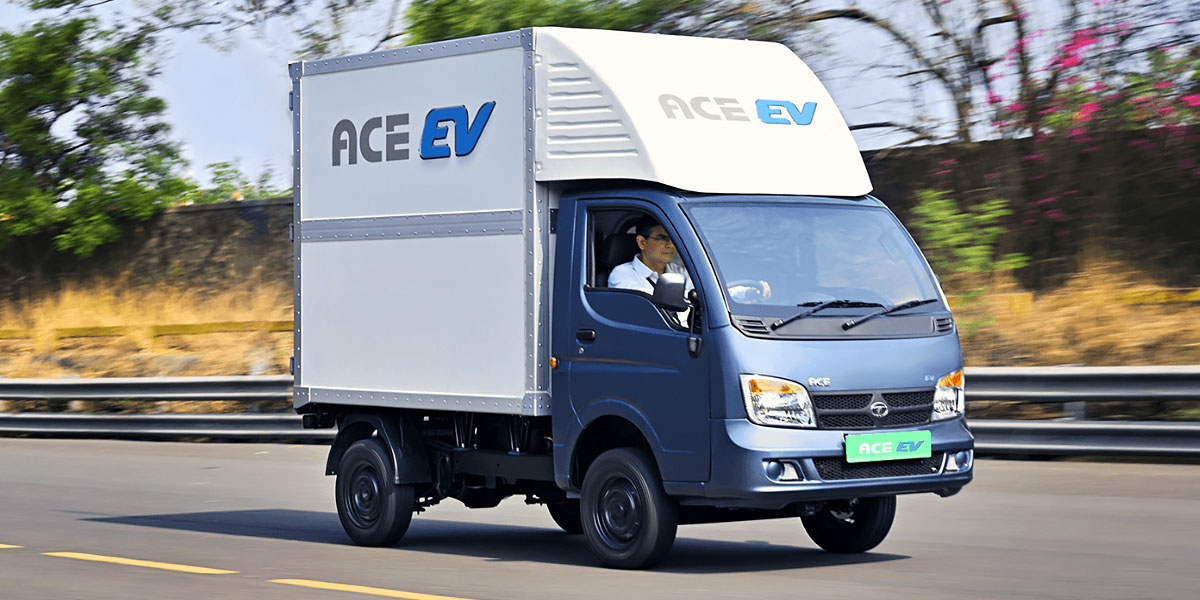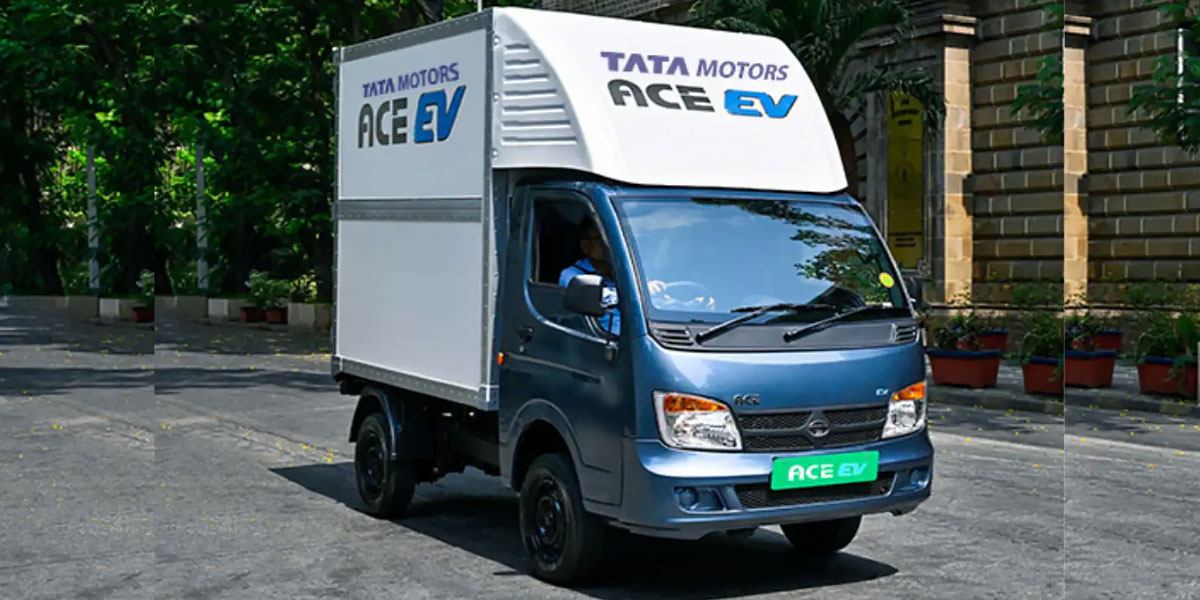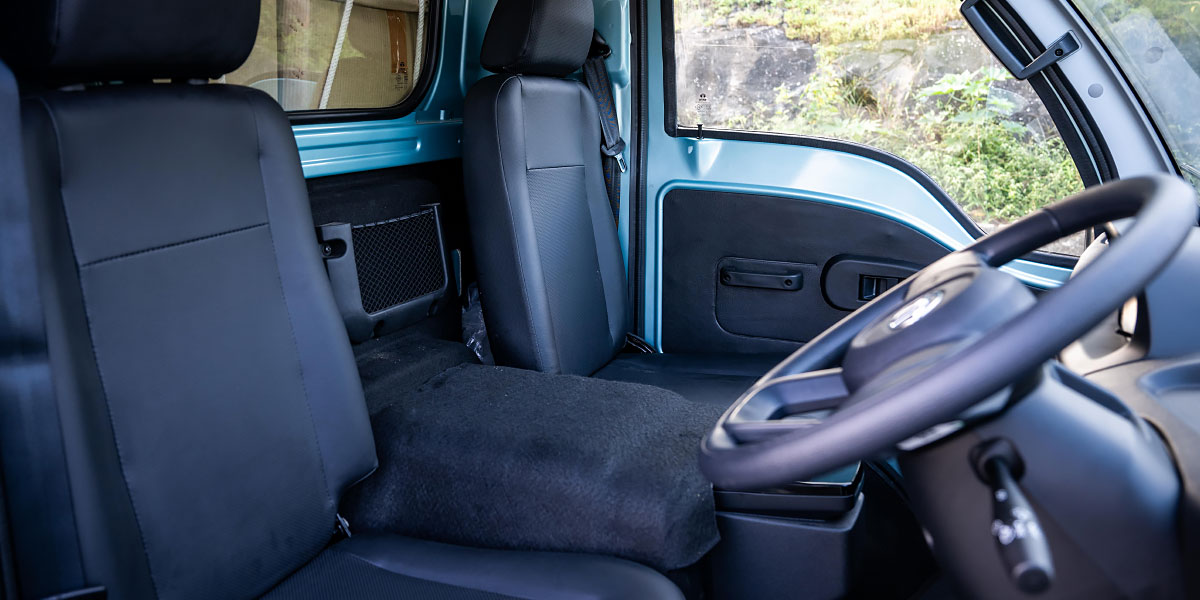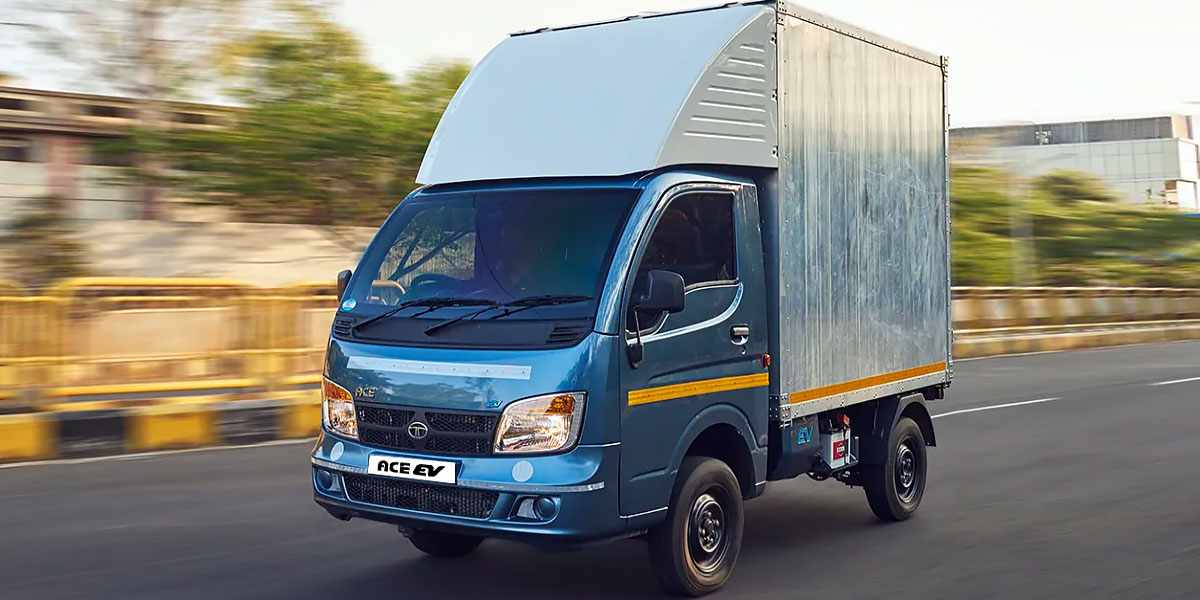Tata Ace EV
User Rating: 3.50 / 5





What is the Tata Ace EV?
The Tata Ace EV is an all-electric compact delivery truck with a 21 kWh battery, 160 km (99 mi) range, 36 hp, and 1,000 kg payload. Starting at $13,000 (€12,090), it's designed for last-mile logistics and low-cost city transport.
Tata Ace EV price:
US$ 13000 *
| manufactured in | India |
| model year | 2022 |
| range (km) | 160 |
| speed (km/h) | 60 |
| power (hp) | 36 |
| battery (kWh) | 21 |
| cargo capacity (kg) | 1000 |
| drive type | RWD |
* Minimum price set by the manufacturer, excluding taxes and additional options
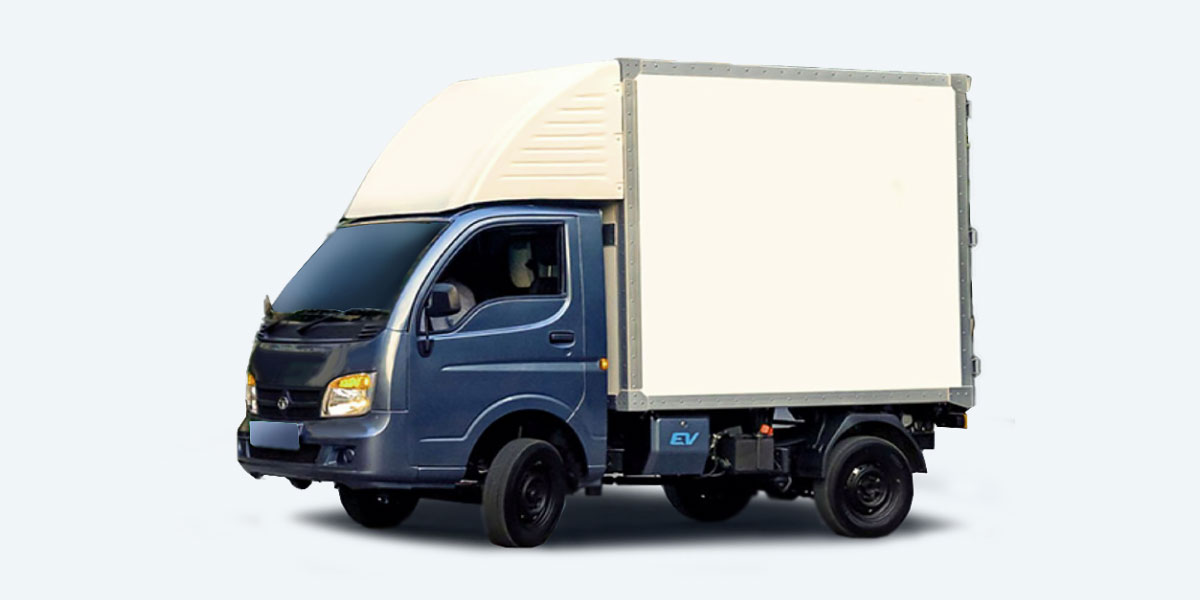
Exterior and Interior photos of Tata Ace EV
Tata Ace EV Review
Tata Ace EV: India's First Electric Mini-Truck for Urban Logistics
When Tata Motors rolled out the Tata Ace EV in 2022, it was more than just another electric vehicle—it represented a practical leap forward for small-scale logistics. Priced competitively at around US$13,000 (£10,400 / €12,100), this compact electric mini-truck targets businesses transitioning from diesel to sustainable transportation. Engineered in India for local markets, it balances affordability, efficiency, and practicality. Whether you're navigating tight urban lanes or fulfilling quick last-mile deliveries, the Ace EV is tailored for precise urban missions.
- Manufactured: Tata Motors, India
- Unveiled: Launched officially in 2022
- Pricing: US$13,000 (£10,400 / €12,100)
- Market Position: Economical electric alternative to diesel-powered Tata Ace ("Chhota Hathi")
Detailed Tata Ace EV Specs: Battery and Performance
Battery and Charging
Equipped with a modest yet effective 21 kWh lithium-ion battery, the Tata Ace EV ensures urban operators can run confidently without range anxiety. On a single full charge, it covers approximately 100-120 km (62-75 miles), ideal for frequent short-distance runs within city limits. Standard charging fills the battery in roughly 6-7 hours, while fast-charging reduces downtime significantly, charging from 15% to full in under two hours. The IP67 rating assures operators against dust and water, making it durable even in rough urban conditions.
- Battery Capacity: 21 kWh lithium-ion
- Charging Time: 6-7 hours standard; under 2 hours fast charge (15-100%)
- Range: 100-120 km (62-75 miles) real-world, 154 km (96 miles) certified
Performance on Road
The Tata Ace EV's powertrain, labeled EVOGEN, delivers a consistent 36 hp and 130 Nm torque—just enough muscle for city-centric cargo duties. With a modest top speed of 60 km/h (37 mph), the mini-truck prioritizes efficiency over high-speed prowess. Acceleration is smooth and predictable, aided by hill-hold assist for inclined terrains, ensuring safe, fuss-free navigation through tight urban spaces. While not suited for heavy-duty highway transport, its targeted design ensures exemplary urban maneuverability.
- Power Output: 36 horsepower (27 kW)
- Torque: 130 Nm (96 lb-ft)
- Top Speed: 60 km/h (37 mph)
Currently, Tata Motors offers standard and customizable cargo body configurations, providing business owners options like flatbed or box bodies based on specific logistical needs.
Exterior and Interior: Simple Yet Effective
Exterior
Sporting a utilitarian yet compact frame measuring around 3.8 meters in length, the Ace EV effectively maneuvers through India's congested streets. Its durable build, complemented by a robust tubular chassis, ensures reliability on variable road conditions. Minimalistic exterior styling focuses purely on practicality, highlighted by the accessible 840 mm loading deck height, enhancing cargo loading convenience. Basic but reliable lighting ensures clear visibility, day or night.
Interior
The cabin is simple but efficient, deliberately stripped down for easy usability. The single-seat layout optimizes cabin space, featuring a straightforward digital instrument panel displaying essential vehicle and battery data. Interior materials emphasize durability and easy maintenance rather than luxury, reflecting its core utility-oriented purpose. Advanced infotainment is absent, staying true to its practical commercial identity.
Pros and Cons of Tata Ace EV
Pros
- Significantly reduced running costs compared to diesel
- Compact size ideal for congested urban environments
- Easy maintenance with fewer moving parts
- Integration with Tata's Fleet Edge telematics for efficient fleet management
Cons
- Limited speed and range unsuitable for long-haul operations
- Minimal safety features (no airbags, ABS)
- Higher upfront cost than diesel variants
- Basic cabin with few comfort or technology features
Conclusion: An Efficient Urban Workhorse
All told, the Tata Ace EV adeptly fulfills its role as a dependable electric cargo solution for city logistics. With lower operational costs, quiet operation, and robust build quality, it's a compelling proposition for environmentally-conscious businesses transitioning away from diesel. For fleet operators and small enterprises, Tata Ace EV indeed stands out as an economically and ecologically sound choice for urban deliveries.
Manufacturer: Tata Motors
Related Video
Comparison:
The Tata Ace EV rolls into a niche that’s heating up fast: compact electric commercial vehicles for last-mile delivery. Lined up against the Mahindra Treo Zor, Euler HiLoad EV, Piaggio Ape E-Xtra FX, and Omega Seiki Rage+, here’s how the Ace EV performs.
Range
The Ace EV leads with a certified 160 km (99 mi) range, though real-world use lands between 100–120 km. That’s ahead of the Treo Zor (~80 km) and Ape E-Xtra FX (~90 km), and comparable to the HiLoad EV (~120 km) and Rage+ (~100–120 km).
Acceleration
The Ace EV isn’t about speed, but its 36 hp motor feels responsive. It beats the Ape E-Xtra and Treo Zor in throttle response, while HiLoad EV with higher torque gets an edge under heavy load.
Power
At 36 hp, the Ace EV outclasses the Ape (~12 hp), Treo Zor (~10 hp), and matches the Rage+. The HiLoad EV tops out around 40 hp but is pricier and heavier.
Charging Time
With AC and DC fast charging, the Ace EV wins convenience points. HiLoad and Rage+ also offer DC fast charging, while Ape and Treo are AC only and slower.
Price
At $13,000, £10,400, €12,090, the Ace EV undercuts the HiLoad EV ($14,800), Rage+ ($13,500), and matches the Ape E-Xtra FX and Treo Zor in affordability, offering stronger value with fleet ecosystem support.
F.A.Q.:
What is the usable battery capacity?
The Tata Ace EV is powered by a 21.3 kWh battery, built to support daily delivery operations in urban environments.
What is the real driving range?
The Ace EV delivers a real-world range of 100–120 km (62–75 miles) depending on cargo weight and traffic conditions.
What’s the top speed?
The vehicle is limited to a top speed of 60 km/h (37 mph), which is optimized for city driving and regulatory compliance.
How fast does it accelerate?
Acceleration is modest due to its 36 hp output, with a focus on smooth torque delivery rather than quick sprints.
What’s the total horsepower and torque?
The Tata Ace EV produces 36 hp (27 kW) and 130 Nm (96 lb-ft) of torque, ideal for payloads up to 1,000 kg.
How long does it take to charge?
A standard AC charger takes 6–7 hours, while a DC fast charger can top it up from 15% to 100% in under 2 hours.
What does it cost?
The Ace EV starts at $13,000, or approximately £10,400 and €12,090, positioning it well for fleet deployment in urban markets.


